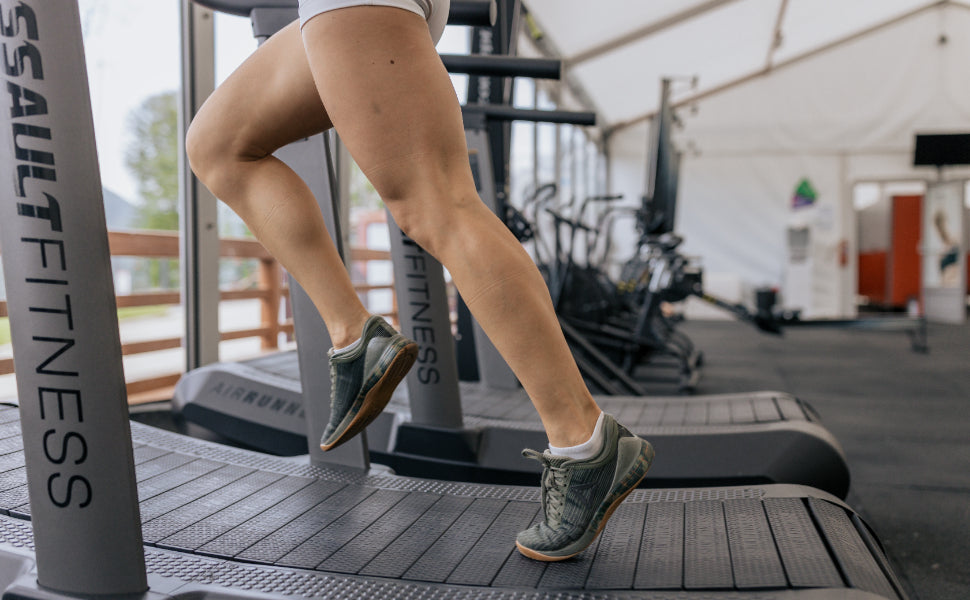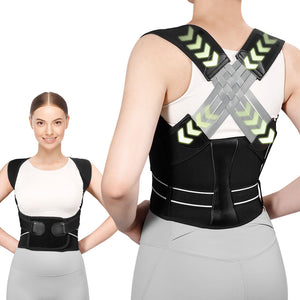Is a Treadmill Bad for Your Knees?

Treadmills have become a popular indoor fitness option, but many people are concerned about the impact of treadmill workouts on their knee health. This article investigates the link between treadmill use and knee health. It explains whether treadmills are harmful to knees or whether adequate precautions and tactics can make them safe and useful fitness equipment.
fivalifitness.com
How Treadmills Work
Treadmills are indoor fitness devices for walking, running, or jogging. They act through a simple but effective method. Treadmills work as follows:
- Moving Belt: The front and back rollers of a treadmill are rotated by a broad, continuous belt. This belt is the ground you walk or run on.
- Motor: The belt movement on treadmills is propelled by an electric motor. The power of the treadmill's engine can be adjusted to alter its pace and incline.
- Control Panel: Treadmills have a control panel where users may adjust settings including speed, incline, and workout length. For easier monitoring, many new treadmills incorporate digital screens.
- Safety Features: To prevent mishaps, treadmills frequently incorporate emergency stop buttons or clips that, when released, quickly halt the treadmill.
The motor drives the belt when the treadmill turns on, allowing the user to walk or run at their preferred speed. Users can replicate uphill or downhill terrain with the adjustable slope feature, which adds variation to their workouts.
It is possible to walk or run inside, regardless of the weather, thanks to treadmills, which are a flexible and practical way to engage in cardiovascular fitness.
Potential Impact on Knee Health
Regarding the effect of using a treadmill on the health of your knees, take into account the following:
- Shock Absorption: The decks of treadmills frequently feature padding to help with some shock absorption. Compared to running on hard outside surfaces like concrete, this feature may be kinder to the knees and lower the risk of knee impact injuries.
- Form: Keeping good running or walking form is essential for the health of your knees. Ineffective form can put too much stress on the knees. A level, constant surface like that found on treadmills can help athletes maintain proper form.
- Inclination Settings: On an inclination, some treadmill users may opt to run or stroll. While this can raise the workout's intensity, it could also put more strain on the knee joints, especially if improper technique is used.
- Footwear: When using a treadmill, wearing suitable, cushioned shoes can assist in absorbing shock and lessen the strain on the knees.
- Body Weight: Your body weight affects the tension on your knees. By using a treadmill to assist you in controlling your weight if you are overweight, you may eventually experience less strain on your knees.
- Preexisting Conditions: Before utilizing a treadmill, anyone with previous knee injuries or conditions should speak with a doctor. In some circumstances, it could be advised to abide by certain rules or to stay away from treadmill workouts.
- Gradual Progression: Beginning at slower speeds and progressively increasing intensity and length can help lessen the risk of overuse injuries, especially knee ailments.
- Stretching and strengthening: While using a treadmill, including the right stretches and strengthening exercises for the leg muscles can support the health of the knees.
Several variables can affect how a treadmill affects the health of your knees. For cardiovascular health, treadmills can be a useful tool, but it's important to utilize them sensibly.
Benefits of Treadmill Exercise
Exercise on a treadmill has many advantages for overall health, especially in the areas of weight loss and cardiovascular fitness.
Weight Management
- Calorie Burn: Using a treadmill for exercise can help you burn calories and lose or maintain weight. To achieve certain objectives, the exercise's length and intensity can be changed.
- Consistency: The controlled and predictable exercise environment provided by treadmills makes it simpler to maintain a regular exercise schedule, which is crucial for weight management.
- Inconference Training: A lot of treadmills have inclination settings that let users imitate uphill jogging or walking. This can help to burn more calories and exercise more muscles.
Cardiovascular Fitness
- Improved Heart Health: Running on a treadmill is a great exercise for your heart. They promote better circulation and heart rate, which can strengthen the heart and lower the risk of heart disease.
- Treadmill training encourages increased aerobic endurance, improving the body's capacity to use oxygen during exercise, which results in enhanced fitness.
- Control of Blood Pressure: Regular treadmill workouts can aid in blood pressure regulation and lower the risk of hypertension.
Customization and Monitoring
- Variability: Treadmills have a variety of speed and incline settings, making them suitable for people with various fitness levels and objectives.
- Data Tracking: Many modern treadmills include built-in heart rate monitors and can sync with fitness apps, allowing users to watch their progress and customize their exercises accordingly.
Safety and Convenience
- Reduced Impact: Running on hard concrete causes more joint impact than using a treadmill, which has a cushioned surface.
- Weather-Independent: Since treadmill workouts can be performed indoors, the effects of the weather are eliminated, making them a reliable option for training.
Exercise on a treadmill is a flexible and efficient technique to control weight, increase cardiovascular fitness, and improve general health. It gives you the freedom to customize workouts to meet personal requirements and objectives while offering a convenient and safe setting for physical activity.
Injury Prevention
The following are some steps you can take to avoid injuries when using a treadmill:
- Proper Running Posture: Make sure you are standing up straight, keeping your head neutral, and letting your arms swing freely. When reducing joint stress, refrain from overstriding.
- Gradual Intensity Increase: Allow the body time to adjust to new loads by gradually increasing the treadmill's speed and inclination to prevent overexertion.
- Warm-up and cool-down: Before starting the treadmill, perform proper warm-up exercises such as brisk walking or mild running to avoid the chance of muscle strains or injury. After the run, do some cooling-down exercises to relax your muscles.
- Choosing the Right Shoes: Make sure you put on the right running shoes that offer enough support and lower your chances of suffering from knee and foot ailments.
- Rest and Recovery: Give your body time to rest and heal by avoiding daily bouts of intense running. Days of running and days of relaxation should be alternated.
- Use of Sports Knee Braces: Sports knee braces can offer extra support during high-intensity running activities, lowering the risk of knee injury. These braces relieve pressure while stabilizing the joints.
- Monitoring Body Signals: Be aware of body cues like pain, discomfort, or weariness. Reduce the intensity or stop the treadmill workout right once you start to feel any discomfort.
- Regular Exercise and Strengthening: Include core and lower body muscle-strengthening activities on a regular basis to improve body stability and lessen the chance of injury.
fivalifitness.com
Reference
Prevent Knee Injuries When Running on the Treadmill
What Happens to Your Body When You Run On a Treadmill Every Day













